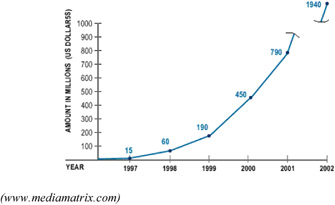Introduction
This chapter traces some of the current e-business development issues in selected regions of the UK and looks at the extent to which take-up of e-business has been facilitated by government initiatives. The aim of the research is to present a pilot study for situational analysis of e-business/e-commerce development within three different Midland and Northern UK regions, considering key issues and support mechanisms and the impact on growth. To place the work in an appropriate context, here are some background figures. There were an estimated 3.7 million SMEs in the UK at the start of 2000 (UK online for Business). The vast majority of these (99%) had less than 50 employees and they provided 45% of the UK non-government employment and 38% of turnover. This gives an indication of the relative importance of SMEs to the success of present UK government e-commerce initiatives. The International Benchmarking Study 2000 undertaken by the Department of Trade and Industry suggested that only 1.7 million smaller firms were connected to the Internet, and still less, 450,000 of them, were trading online. A later survey by the UK Office of National Statistics (later referred to as ONS) revealed significant variations in e-commerce implementation across the UK, with London and the southeast region "considerably" outpacing Internet sales in other regions (Saliba, 2001). The UK bought $28.6 billion in goods and services, London-based companies accounting for $7 billion, while regions such as the northeast and east Midlands spending less than $1.5 billion. It is the aforementioned "significant variations" that were of interest to the researchers in this case. Having noted this regional variation, the research undertaken has focused on the lower spending regions to try to ascertain what are the limiting factors for companies in these regions. Further research will need to be undertaken to discover whether these regional variations are still present, and also whether or not a series of factors can be isolated that apply to different companies. The period 1997 1999 saw exceptional e-commerce growth within the UK through many new "get rich quick" ventures supported by significant venture capital input. At the same time, established businesses looked to Internet technologies to support or revolutionize their existing business processes. After a series of dot.com collapses, 2000 2001 venture capital has largely dried up, but the market has continued to grow steadily with many mergers and acquisitions between new and old economy firms each supporting the other by exploiting their experiences and core competencies. In September 1999, the Performance and Innovation Unit (PIU) published a report, "e-commerce@its best," which found that the UK was the leader in e-commerce developments within Europe, but still behind the USA, Canada, Australia, and Scandinavia on key measures of business e-commerce use.
| |||||||||||||||||||||||||||||||||
| | |||||||||||||||||||||||||||||||||
EAN: 2147483647
Pages: 188

